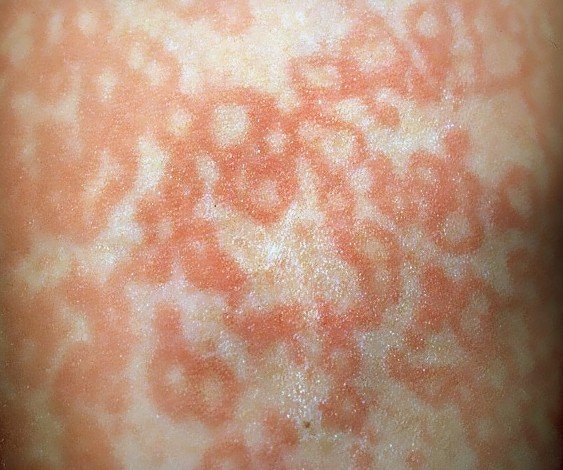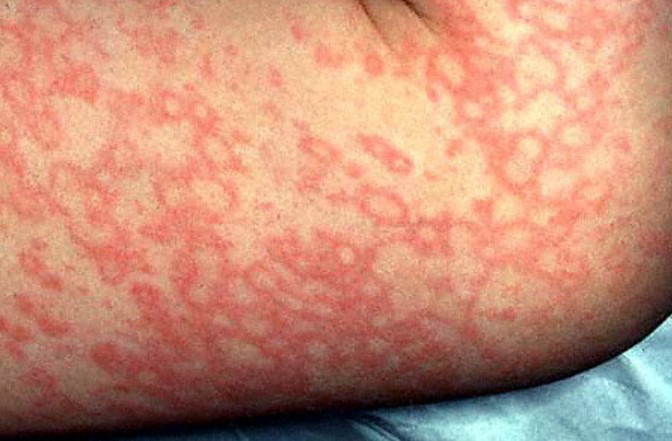Fifth disease
What is Fifth disease?
Although adults can get this medical condition it is more commonly found in children. The disease is mostly seen in children between the ages of five and fourteen during spring and winter. Because of the rash that appears on their face it is also referred to as slapped-cheek disease because it looks as if the child has been slapped on the cheeks. It is an illness that is mild when a child or adult gets it but if you have a blood disorder or a weak immune system it can be a serious illness.
This illness got its name from a classification system that was developed in the 1890’s where was the fifth disease listed in a list of the most common rash-associated infections that a child got during that time. The other four on the list were measles, rubella also known as German measles, scarlet fever, and an illness that is referred to as fourth disease because it was an illness that was not known to the physicians today. Once you have been infected with the virus that causes fifth disease you will develop immunity to it and not get it again. In households where there are other people, especially children, there is about a fifty percent chance that other members of the house will get fifth’s disease.
Fifth disease Symptoms
After you are exposed to the virus you will start to show symptoms of fifth disease. Some of the early symptoms you see are similar to the flu and can include:
- Sore throat
- Runny nose along with nasal congestion.
- Headache
- Low-grade fever, which happens fifteen to thirty percent of the time.
- Fatigue
- Muscle aches
- Swollen glands
- Red eyes
- Diarrhea
These symptoms will last for several days. There is even a chance that these first symptoms will be so mild that you do not even notice them or you may think you are coming down with the flu or cold. Seven to ten days later you will see the rash start to abruptly appear on your face and after four days it will slowly start to appear all over your body as a light pink rash. There is a possibility that you will feel itchy when you have the rash but within five days the rash will start to disappear along with the itch. It can take from seven to twenty-one days for the rash to completely disappear. For the next few weeks you may see the rash reappear when you get too warm, under stress, or out in the sun. Although the rash has come back does not mean that the illness is worse. Not everyone who has fifth disease will feel sick or get the rash.
The rash that appears on the face is reddish in color and appears to have a lacy look. Most children will not have any complications with this illness and will recover quickly. In some adult cases of fifth disease after having the disease it may be followed up by swelling or pain in your joints, especially in your wrists, ankles, hands, or knees.
Causes of Fifth disease
This disease is caused by a virus that is called human parvovirus B19 and can be spread by something as simple as a sneeze or cough. When people see the word parvovirus they immediately think of a disease related to animals but in this case this is not true. The virus can only be spread and caught by human. In 1975 the human parvovirus B19 was discovered as the cause of this illness. People are contagious when they have the flu-like symptoms and before you break out in the rash. By the time you see the rash you are no longer contagious and cannot spread the illness to anyone. The only people who may be able to spread the disease for a longer period of time may be the ones who have blood disorders and a weak immune systems. The rash that you get with fifth disease is the result of an immune system reaction that happens after the infection has passed and just before the rash.
Diagnosis
When you go to see your physician about the rash or flu-like symptoms they will do a physical exam and take down your medical history. If you only have flu-like symptoms it will be a little harder to diagnose but if you have the rash it will make it easier for the physician to diagnose fifth disease. Usually the physicians do not need to any tests run to make a diagnosis. If you or your child has been sick for awhile but do not have the rash that would tell the physician that it is fifth disease they may want to have blood tests done to see if their illness is caused by the parvovirus B19.
Fifth disease Treatment
At this time there is no vaccine for this illness. Most of the time when you have fifth disease it will disappear on its own as antibiotics will not help with the disease. The reason is that fifth disease is not caused by bacteria but a virus and antibiotics do not work on diseases caused by a virus. There are antiviral medications but at this time there none that are available to treat this disease.
Some home treatments that you can use to help with the symptoms can include:
- Make sure that you get plenty of rest.
- Use ibuprofen or acetaminophen to give you some relief for your headache, joint pain or fever.
- Drink plenty of fluids
Fifth disease Pictures
Photos, Images and Pictures collection of Fifth disease…
Fifth Disease and Pregnancy
Although it is not common if a woman who is pregnant gets fifth disease it can cause problems for the unborn baby. In some cases the unborn baby developed severe anemia, especially if the mother got fifths disease during the first half of her pregnancy. There have been instances where the anemia was so severe that the baby did not survive. Less than five percent of women who are pregnant will have serious complications if they become infected with fifths disease during their pregnancy. Half of the women who are pregnant are immune to fifth’s disease due to them having fifth disease when they were younger and are immune to the disease now.





